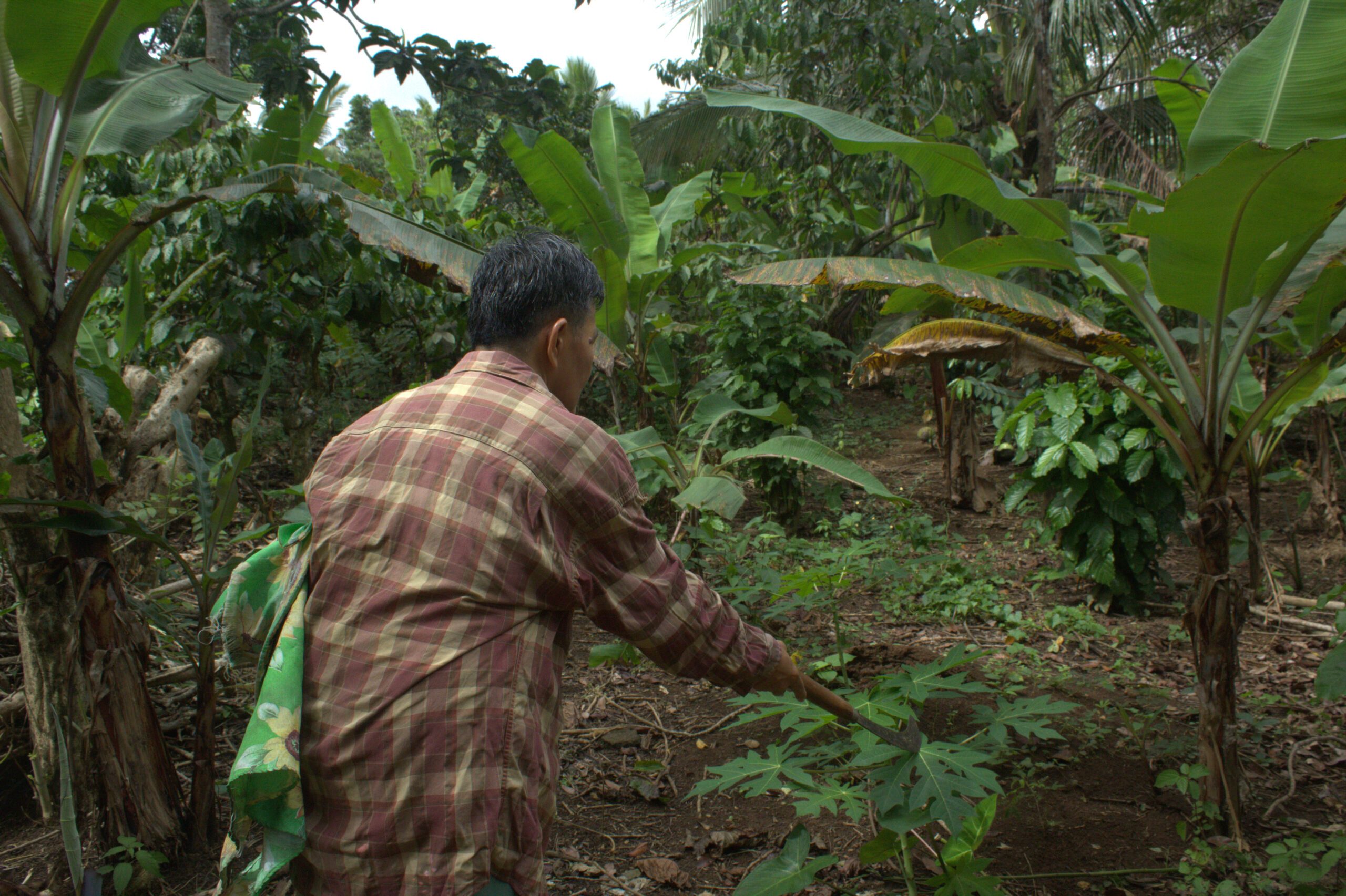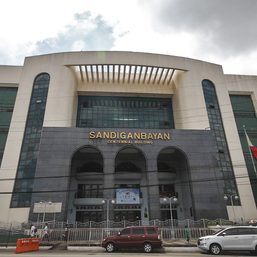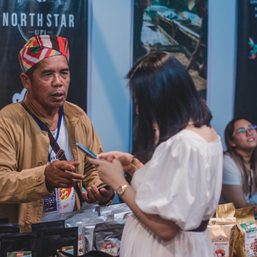SUMMARY
This is AI generated summarization, which may have errors. For context, always refer to the full article.

DASMARIÑAS CITY, CAVITE — From its proud, bountiful harvests of coffee to its now dwindling quality and numbers, the Amadeo town coffee industry in Cavite has long been challenged to brew back to being the country’s coffee capital because of the global climate crisis.
The municipality of Amadeo is famous for its Pahimis blend that is a combination of the robusta, arabica, and excelsa varieties. It has more than 4,700 hectares dedicated to coffee production in the uplands of Cavite. This has made coffee the main crop and economic driver of the town.

However, for 67-year old Lucinda Amparo, former municipal agricultural officer of Amadeo and a coffee farmer herself for 37 years, the town’s main economic driver has slowly been overshadowed by several other cash crops in the town.
“As of present, hindi na katulad ng dati ang kape gawa ng climate change at gawa ng ang kape ay tumatanda na. Ngayon, dahil ang lupa namin ay marami nang tanim, hindi na masyadong nag-bobloom ang kape. May mga prutas na kasi,” Amparo said.
(As of present, the quality and quantity of harvest is not the same because of climate change and aging coffee. Since our farms have a variety of planted crops, coffee cherries do not bloom that much anymore.)
Drastic environmental impacts
Among the several factors of the climate crisis that greatly impacted the Amadeo coffee industry was the Taal ashfall in January 2020.
According to Arnold Bay, secretary and licensed coffee evaluator of Cafe Amadeo Development Cooperative, the impact was not only on the number of harvests but also on the quality of the coffee affected by the ashfall.
“During that time, sad to say, nag-close ang Cafe Amadeo. Malaking epekto sa income namin at kung paano ang kakainin sa susunod na araw, ” Bay said.
(During that time, sadly, Cafe Amadeo had to close. It had huge effects on our income and what we will eat in the following days.)
Following the enhanced community quarantine announcement, operations were hampered for the cooperative. The impediment caused significant fallouts in its agricultural economy being that it is among the local cooperatives that supports more than 500 of its members.
The coop’s recovery was also disrupted by persistent challenges of extreme, variable weather conditions experienced in the country. This affected the consistency in farming practices and stability of yields that severely affected farmers’ income.
As a solution, the Department of Agriculture in Amadeo, of which Amparo was agricultural officer until 2022, recommended intercropping of coffee plants along with other fast-growing crops such as corn, banana, and rambutan among others.

Degenerating coffee economy
This government intervention also aimed to address the declining income sources of local farmers who are highly-dependent on coffee farming. “Nagtatanim pa ng iba pang crops dahil kailangan talaga kumita. Halimbawa, nag-ani ka ngayon ng saging, after two (2) days ay may aanihin ka na ulit. Iba ang kape, maaani mo siya matapos ng tatlo o apat na taon,” she added.
(Farmers have to plant other crops because they really have to generate extra income. For example, if you harvest bananas now, you can harvest again after two days. It’s different for coffee because you will only harvest it in three to five years.)
According to Amparo and Cafe Amadeo, there was a time coffee production alone could sustain every farmer’s household throughout a year because of abundant harvests. However, recently, this has not been enough to tide them over annually.
“Para sa mga farmers na walang pinagkukunan ng trabaho, hindi talaga [sapat]. 500 kada isang lata. Kung maka-ani lang sila ng dalawampung lata [sa isang taon], paano nila mai-budget monthly ang pera nila?” Amparo said.
(For farmers who do not have other sources of income, it’s not [enough]. 1 can cost Php 500 each. If they only get to harvest 20 cans in a year, how will they budget their income for that monthly?)
Furthermore, the cost of labor to coffee farmers also has unstable rates. “Ang pagbabayad ay arawan at nagre-range ng P500 – 700 per day. Malaking bagay para sa isang [farm] owner na magbabayad siya tapos iyong na-harvest ng laborer ay hindi naman karamihan,” Bay said.
(Payment is daily and ranges from Php 500 – 700 a day. That’s a lot for a farm owner to pay that much while harvest for coffee is little.)

Other experienced challenges
The aging coffee, its farmers, and the absence of a motivated youth sector in coffee farming are major burdens of the Amadeo coffee industry.
Farm lot owners in Amadeo have options to hire laborers to continue coffee farming. However, as farmers themselves age, the number of laborers also decreases together with the pay that both lot owners and farmers get.
Younger generations also lack the interest and motivation to be involved in coffee farming because of the long waiting periods for harvest. “Siyempre, ang gusto ng mga kabataan ay akinse o katapusan ay may kita. Eh kasi nga naman kapag farming, hihintayin mo siya. Kahit na umani ka ng libo, hihintayin mo siya,” she said.
(Younger generations want to have income by the mid- or end of the month. In farming, you will have to wait. Even if you can harvest thousands of yields, you still have to wait.)

Rich taste of hope
The local government and Cafe Amadeo are striving to assist the industry through various livelihood projects and loaning programs.
“Isa sa advocacy ng Cafe Amadeo ay ang tulungan ang mga taga-rito sa Amadeo (sa paghahanap buhay). Ang goal ni Cafe Amadeo ay matulungan ang mga farmers para ang mga nahaharvest nila na kape ay mayroong mapagdalhan,” Bay explained.
(Among the advocacies of Cafe Amadeo is to help citizens of Amadeo in their livelihoods. Our goal is to help our local farmers so that the coffee that they harvest will have a place to go to.)
Despite these initiatives, Amadeo farmers believe that there is hardly an emphasis on the town’s then-plentiful coffee farming. However, this does not dull their hope of redeeming back the title of being the country’s coffee capital.
Their one big message? Keep the fight alive.
“Para maging coffee capital kami ulit, kumbaga sa tulong ng local government unit (LGU) at Cafe Amadeo, at the same time, mahalaga ang tulong ng bawat isa. Hindi kakayanin ng farmer lang, o LGU lang, o Cafe Amadeo lang. Mahalagang tulong tulong ang lahat,” Amparo said as she emphasized on the significance of the participation of every sector in the community.
(For Amadeo to be the coffee capital again, through the help of the local government and Cafe Amadeo, at the same time, every person’s help is important. A farmer alone, the LGU alone, or Cafe Amadeo alone cannot do this. Every single effort is important.) – Rappler.com
Joey Alberto is a Development Communication undergraduate from the University of the Philippines Los Banos. She is currently a volunteer for Rappler’s MovePH to practice and hone her interests in community and development journalism.
Add a comment
How does this make you feel?















There are no comments yet. Add your comment to start the conversation.